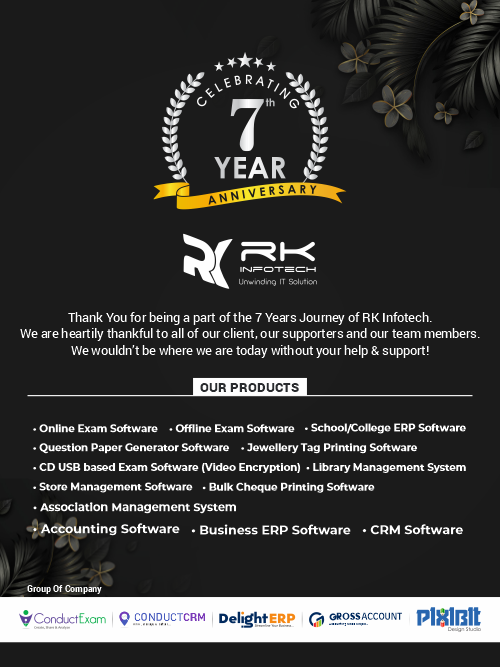Steps to Collaborate with the Right Software Development Partner
Introduction
Collaborating with the right software development partner is critical to ensuring the success of your software development project. Choosing the right partner can save you time, money, and resources, and ensure that you achieve your project goals.
Outsourcing software development has become a necessity of the art these days. However, finding the right software development partner that meets your needs is the biggest challenge. One of the main reasons to find a software development partner is that not everyone has the resources to develop custom software. For example, startups and small businesses often have limited budgets.
Large companies, on the other hand, want to focus on their day-to-day business and can not stop producing their products. Also, some projects may be short-term, so companies may not want to hire permanent employees. By partnering with the right software development company, businesses like yours can benefit from speed and flexibility, risk reduction, technical expertise, cost-effectiveness, ability scalability, flexibility, innovation, access to unlimited resources, and more.
As a result, global pending outsourcing will become $971.2 billion by 2023. Additionally, 57% of executives reported increased budgets in managed services, while 32% reported increased budgets in traditional outsourcing. This article will provide a complete guide on how to find a software development partner for your business.
In this blog, we will discuss steps that can help you work with the right software development partner for your project.
Steps to Collaborate with the Right Software Development Partner:
1. Define Your Project Requirements
The first step to working with the right software development partner is to clearly define your project requirements. This includes defining your goals, objectives, and expectations for the project. By clearly defining project requirements, you can ensure that the software development partner you choose has the skills, expertise, and experience to deliver customized software development services that meet your needs.
2. Budget
The budget is one of the most important aspects of a Software Requirements Specification (SRS) document. Each business has a specific budget for a specific project and wants to complete the project within a specific budget. However, financing a startup may be different from financing an enterprise-level company. Therefore, knowing these aspects is very important for business.
Some of the factors that affect the budget of a software development project are:
- Product Complexity
- Tech stack
- Product design
- Product features
- Development team
- Target audience
- Support and maintenance
- Testing
- Technical debt
An experienced business analyst can help break down your budget estimate into several features. It also helps you figure out how much you need to invest in your minimum viable product (MVP).
3. Timing
Associating a time frame with a project scope helps define time-limited deliverables for the project. Sometimes it can even help leverage first-mover advantages. However, when associating time-frame, consider factors that may impact the project`s duration such as bugs, errors, maintenance or upgradation of software, technical issues, and additional feature requirements.
Aim for flexibility rather than a fixed duration! You can reach out to a leading software development company. Their highly experienced project managers will help you determine your project`s time frame, and divide the whole project into time-bound deliverables, making it easier to track the progress.
4. Conduct in-depth research for Potential Partners
One of the primary ways to find software development partners is by searching for “Software Development Companies” on Google. This may provide a list of companies, but not all companies may be suitable for your needs. The reason is that Google provides thousands of search results. Filtering out those lists for what matches what you need would be cumbersome. So, what alternative sources can you find for your software development partners?
Clutch, Goodfirms, The Manifest, and more are just some of the sources for reviews and ratings of top IT outsourcing companies that can help you find potential development partners. These platforms have unbiased customer reviews and build a strong reputation among IT companies by constantly reviewing the ratings assigned to specific companies. Major IT companies have profiles on these platforms, making it easy to find the right technology partner for your business needs.
5. Check the Partner’s Credentials
Verify the credentials of potential software development partners. This includes verifying certifications, awards, and recognition, and validating experience in the industry and similar projects. You can also view their social media profiles and online presence to understand their culture, values , and approach to software development.
6. Schedule an Initial Meeting
Schedule an initial meeting with your software development partner to discuss your project requirements and understand their approach to software development. This allows the community to ask questions, discuss your concerns, and assess your communication skills.
7. Evaluate Their Technical Skills
Evaluate the skillset of your software development partners. This includes assessing experience with the technologies and platforms required for the project, ensuring code quality, and understanding approaches to testing and quality assurance.
8. Assessment of project management skills
Evaluate software development partners’ project management skills. This includes reviewing project management methodologies, understanding communication and collaboration tools, and assessing your ability to manage schedules, budgets, and resources.
9. Workflow Analysis
Discover the software development partner workflow.
This includes understanding the approach to software development, including the design and development process and the test and deployment process. You should also review your documentation standards to ensure they align with your organization’s standards.
10. Assistance and Service Evaluation
Evaluate software development partners’ support and maintenance services. This includes understanding our approach to support and service, including response times, availability, and support levels. You should also review their disaster recovery and business continuity plans to ensure that they can provide reliable support and maintenance services.
11. Negotiate the Contract and Decide on the pricing model
Pricing plays a vital role in finalizing the software development partner, as most businesses today are looking for a cost-effective solution to maintain the uniqueness of the product within their defined budget. That`s where the pricing or the engagement models plays a massive role.
There are three significant pricing models:
Fixed-price model
A fixed-priced model is a contract where the software development team should deliver the project within a predetermined amount agreed upon by both parties. This works very well for customers because they don’t have to pay more than the agreed-upon amount. However, software development teams are reducing their work just as feature requirements have changed. We cannot charge any additional fees. So in the long run, the relationship between the client and the development team can be bitter.
When to use a fixed-price model?
- When you’re working with a limited budget and time
- When the project is small and short-term
- When technical documentation is ready
- When requirements are not going to change
- When you can fix the project’s scope in advance
Time and material models
The time and materials model calculates software development costs based on no. Resources and time used by the development team. Here, customers pay for development time. So the client needs to keep track of the scope of the project. The clearer your requirements, the faster the delivery of finished products. However, if your requirements are not exact and many adjustments are required, you will have to pay a lot of extra money.
When to use a time and material model?
- When the project is for the medium or long term
- When the requirements continually get evolve
- When you want plenty of customization in the product
- When you wish for flexibility to modify requirements
- When you want transparency between the client and the development team
Dedicated team model
The dedicated team model eliminates the disadvantages of a fixed price, time, and materials. Software development providers provide infrastructure, recruitment, and management support for teams. They also monitor the work of developers and often report on project progress. Finally, the dedicated team model attempts to align company policies and culture, development practices, software development methodologies, tools, and more.
When to use the dedicated team model?
- Projects are long-term and rapidly changing in scope.
- If you want to share international experience and knowledge.
- You want full control over the development process.
- Lack of certain skills or experience;
- When you want to control your budget and specify the scope
Contracts with software development partners. This includes a review of the scope of work, deliverables, and schedule. You should also discuss any additional services you may need, such as training and documentation.
12. Sign the Contract and Begin the Collaboration
The final step is to sign the contract and begin the collaboration with the software development partner. You should ensure that all parties understand the terms of the contract and that there is a clear communication plan in place. You should also monitor the progress of the project regularly and communicate any concerns or issues promptly to the software development partner.
Conclusion
In conclusion, collaborating with the right software development services company requires careful planning and evaluation. You should define your project requirements clearly, research potential partners, evaluate their technical and project management skills, review their work process, and negotiate the contract and payment terms.









